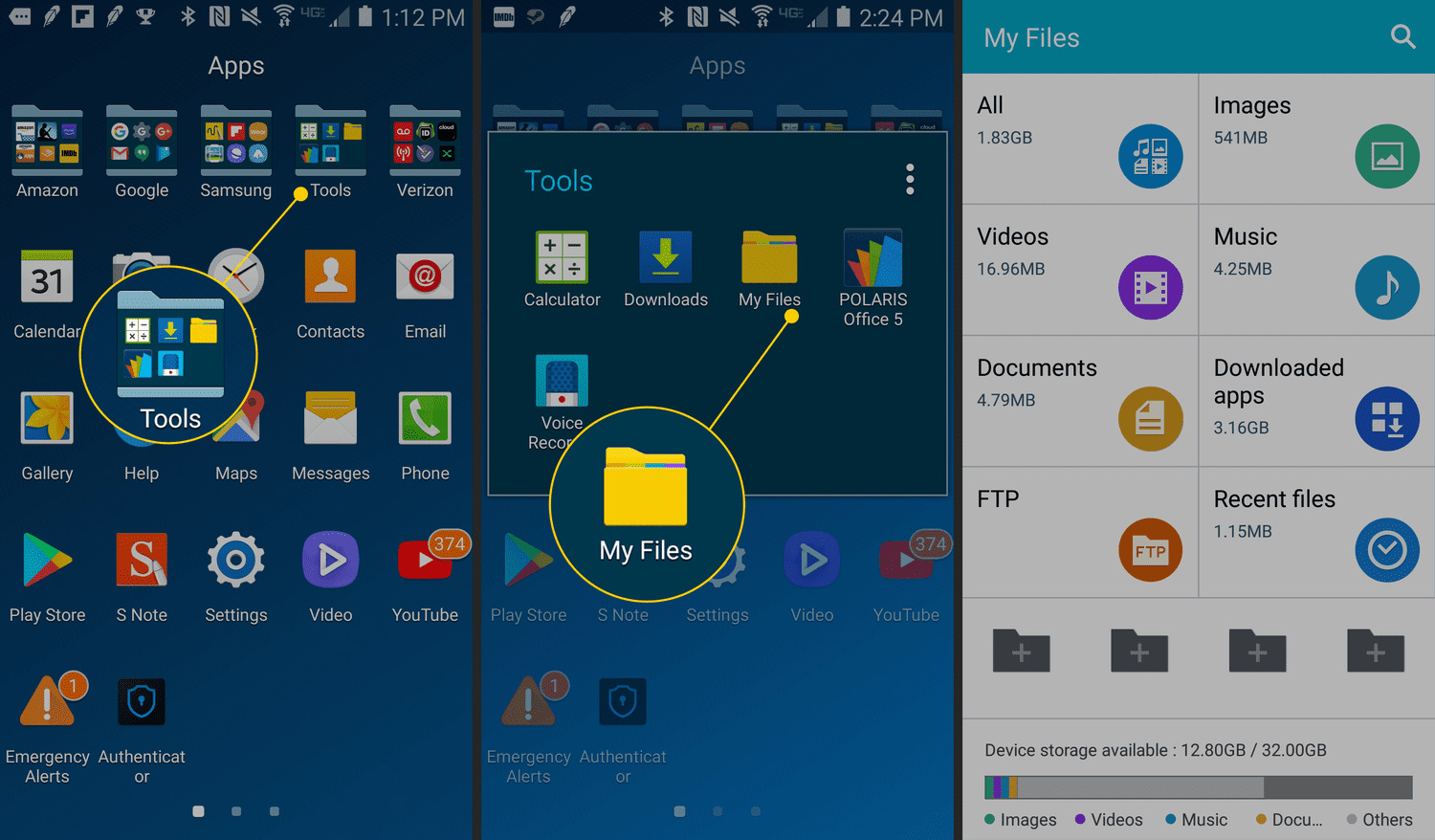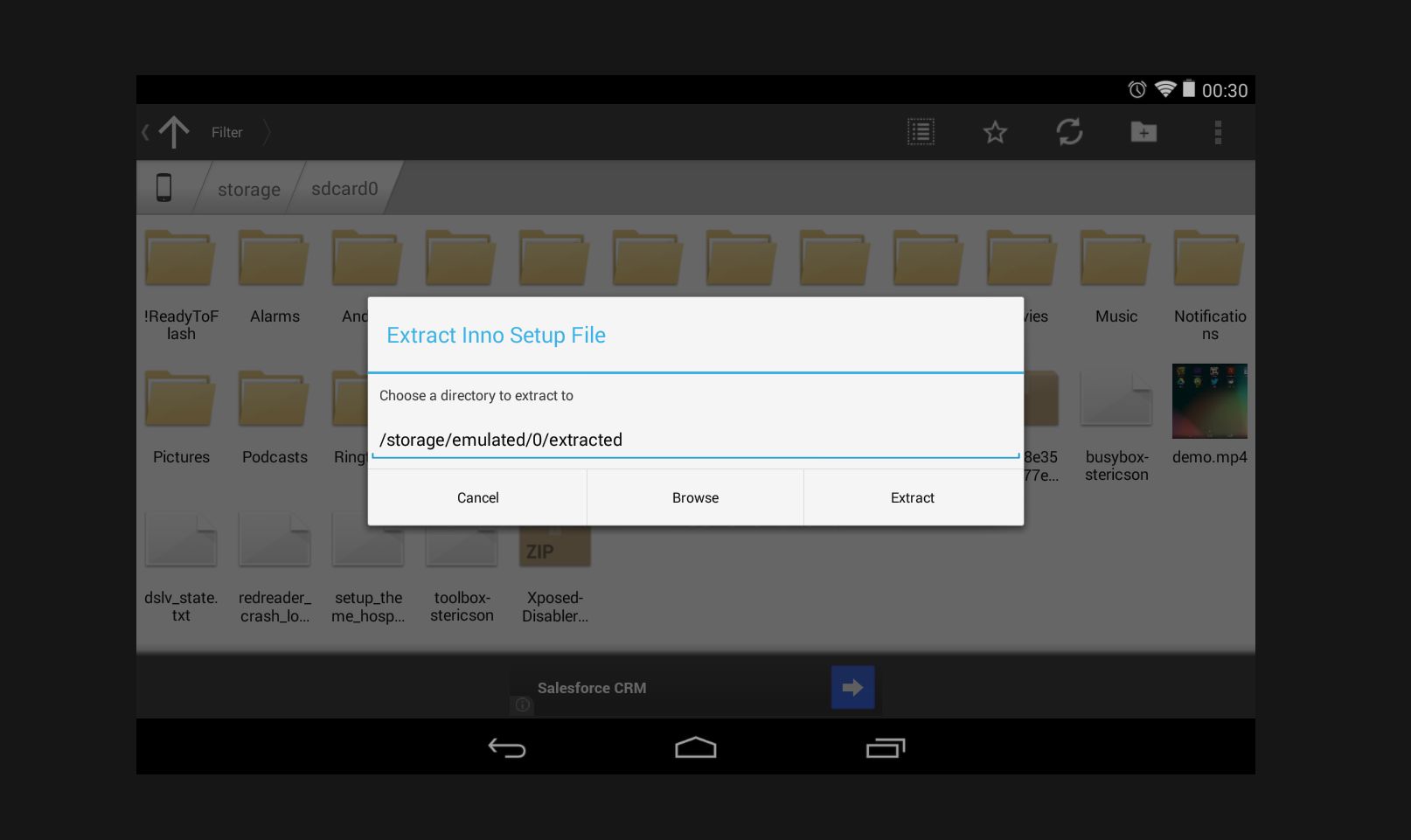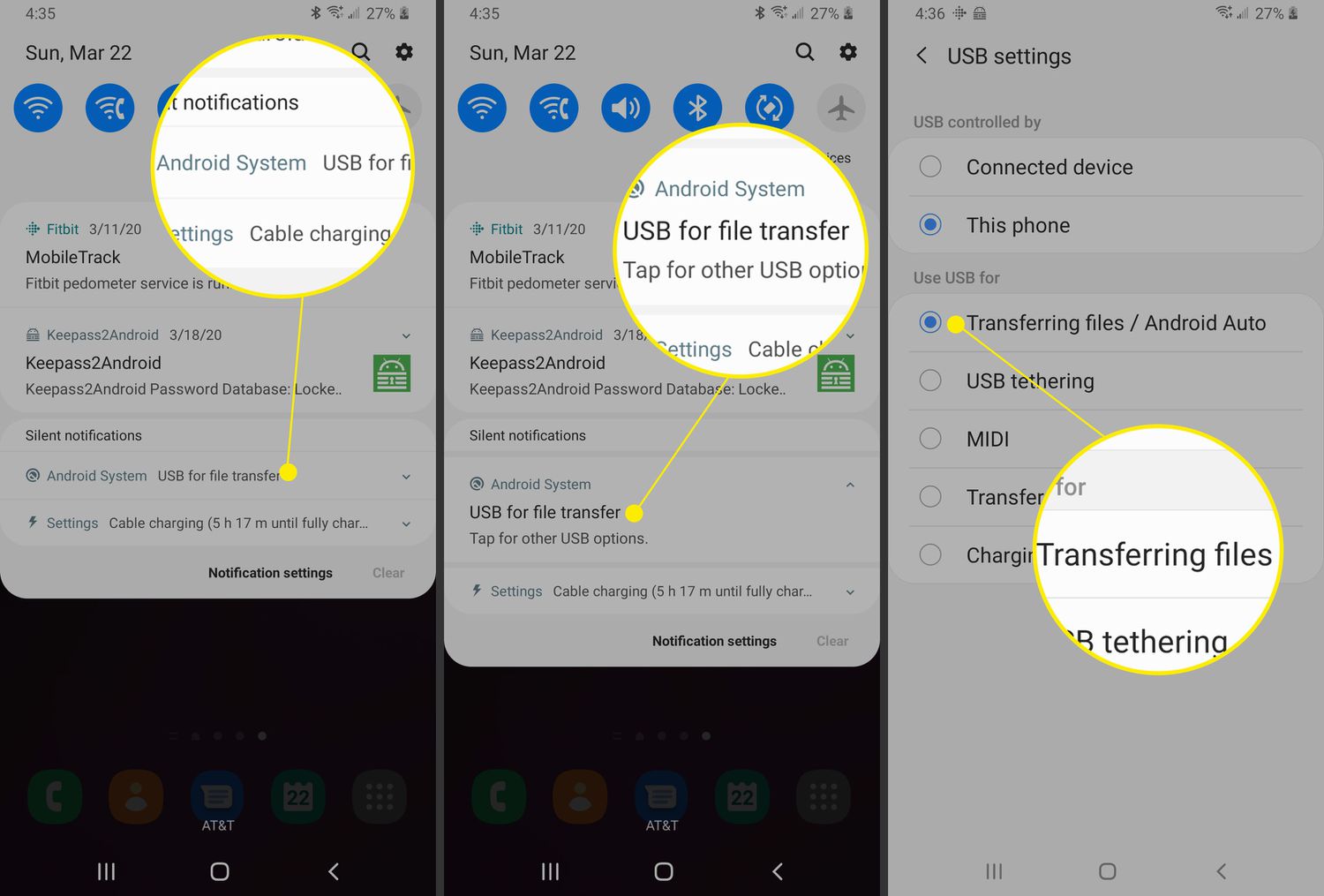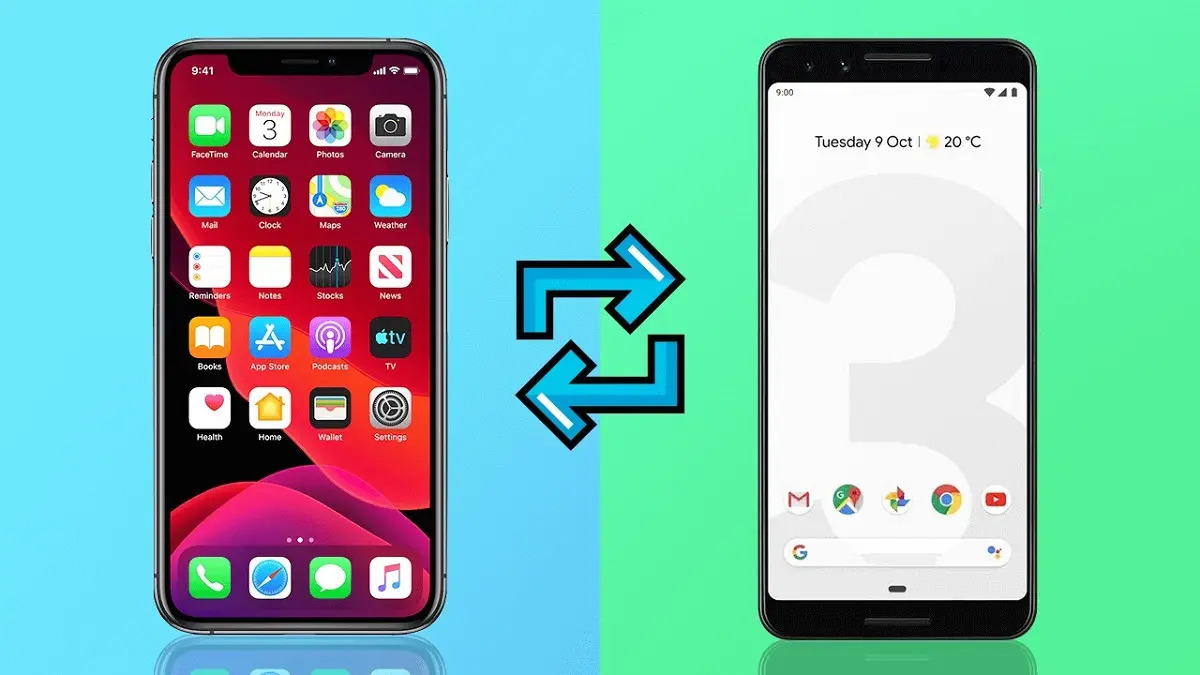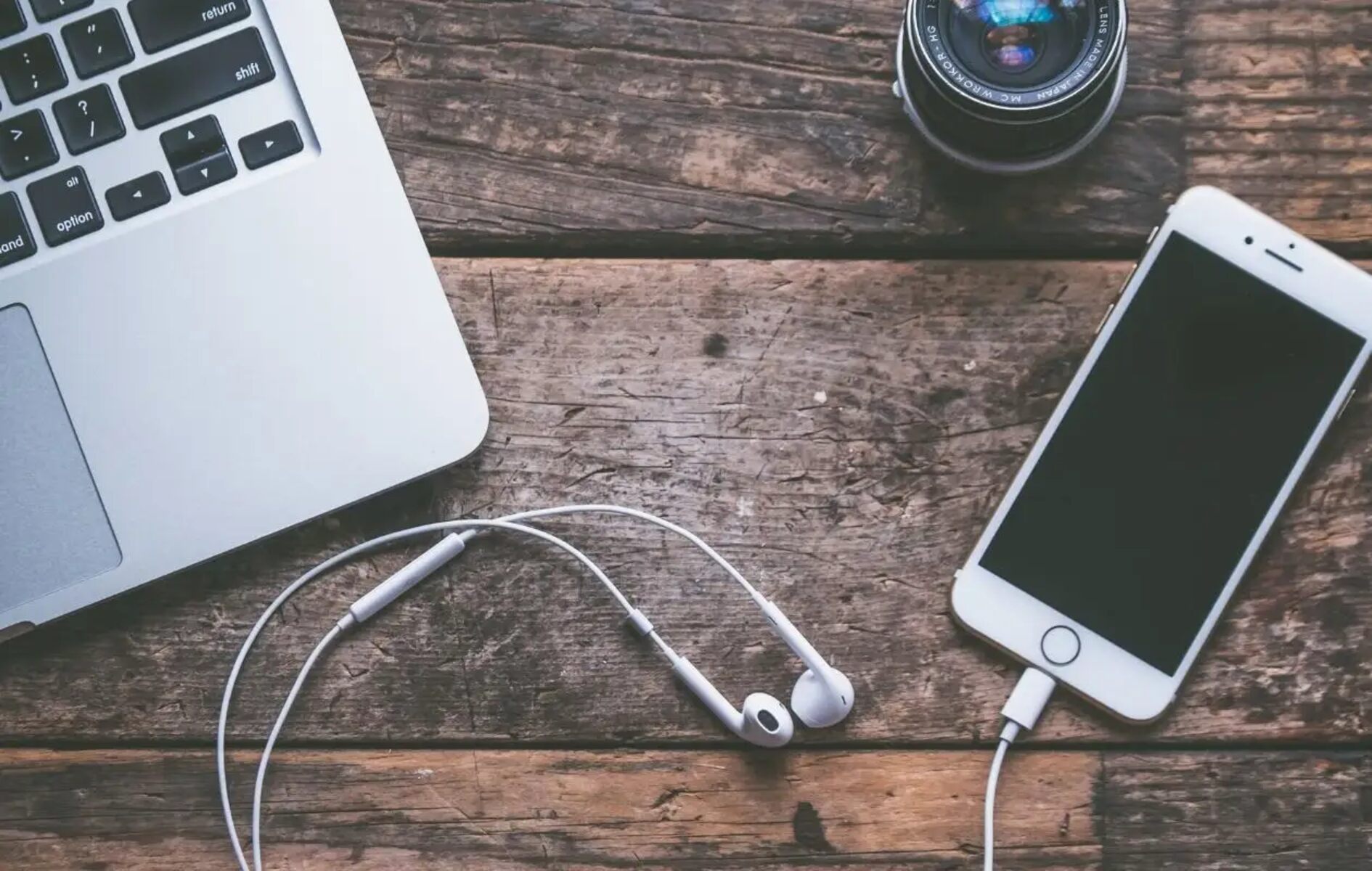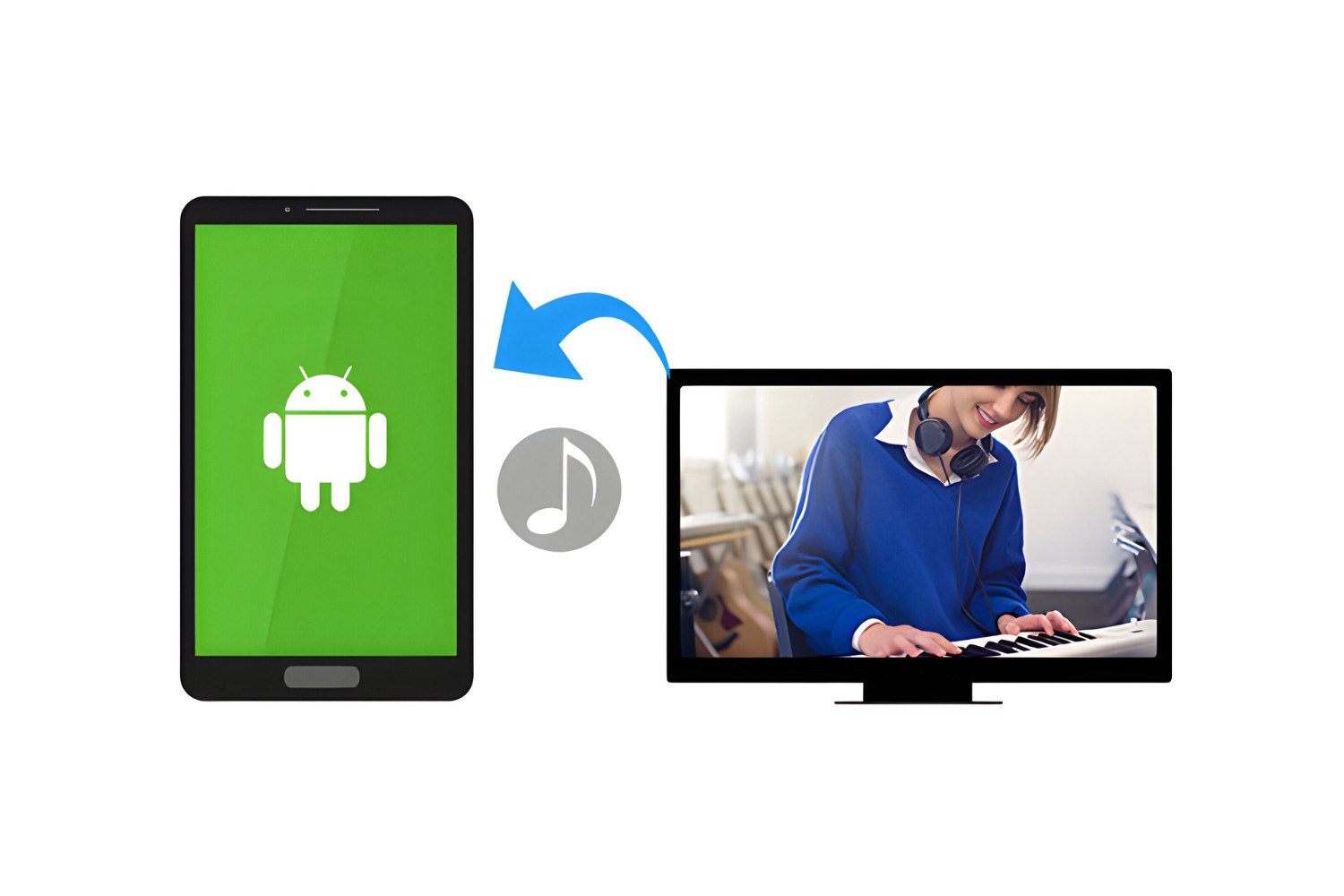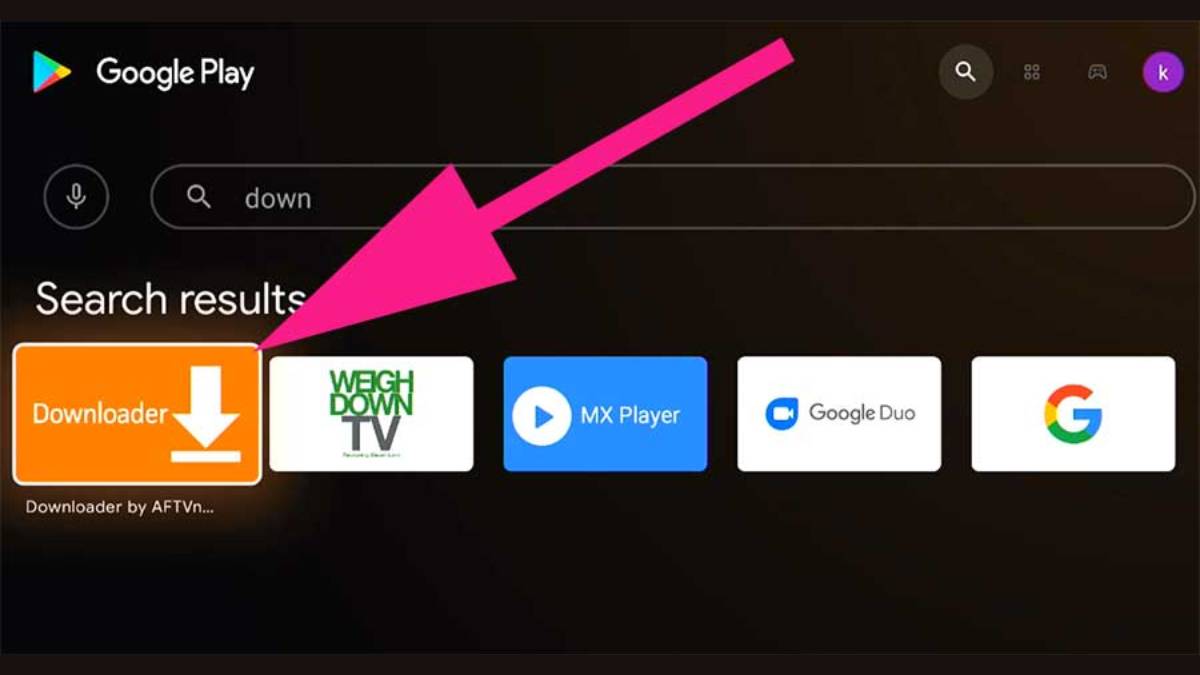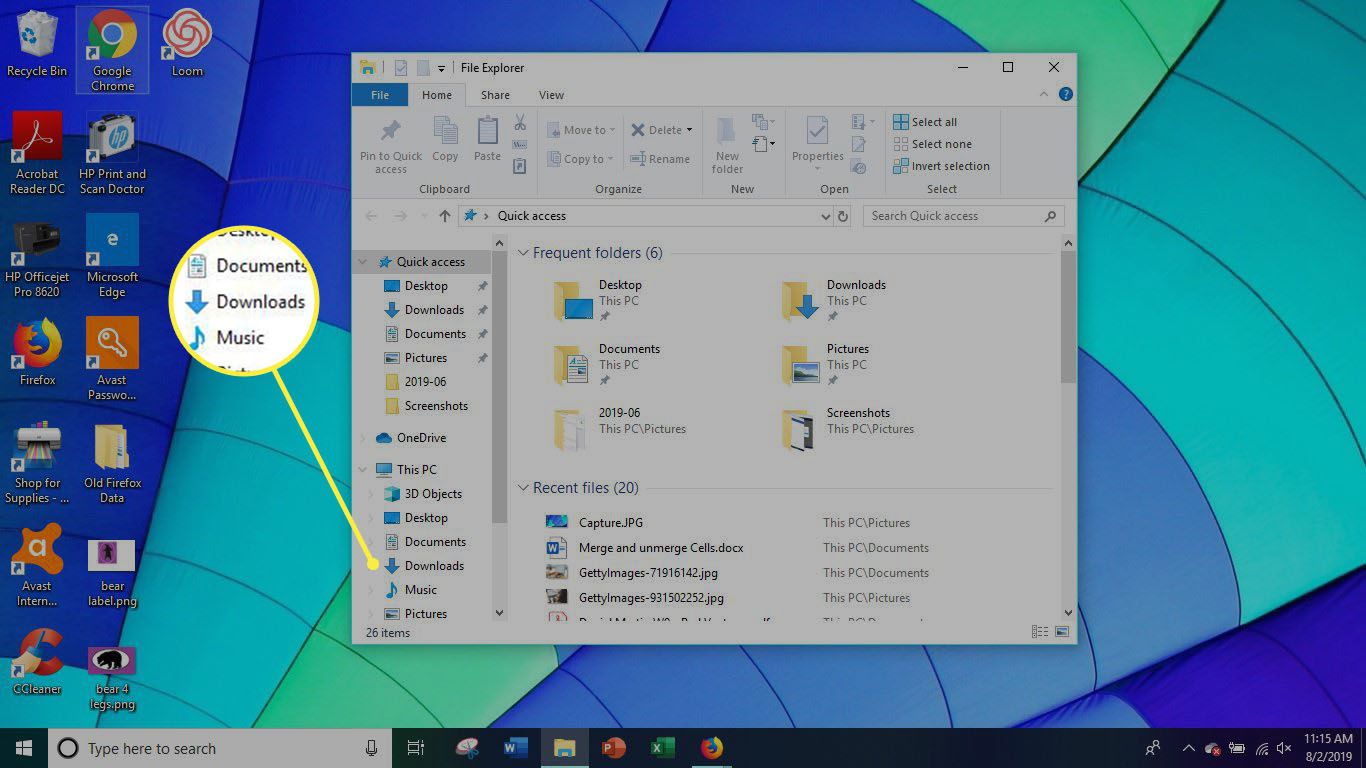Introduction
When it comes to managing files on your Android device, it’s essential to know where your files are stored. This knowledge allows you to access and organize your files effectively, ensuring that everything is within your reach whenever you need it. Whether you want to find a downloaded document, locate a specific photo, or recover lost files, understanding the Android file system is crucial.
Android utilizes a hierarchical file system that consists of various storage locations, each serving a specific purpose. These storage locations include internal storage, external storage, app-specific directories, media files, and even cloud storage options. Familiarizing yourself with these storage options and learning how to navigate through them will save you time and frustration.
In this article, we will delve into the different areas within the Android file system, explaining where your files are located and how you can access them. Whether you’re a tech-savvy Android user or a newcomer to the platform, this guide will equip you with the knowledge you need to effectively manage your files on Android.
Understanding the Android file system
To comprehend the Android file system, we need to understand its underlying structure. Android follows the Linux file system hierarchy, which is organized into directories or folders. Each directory serves a specific purpose and contains various types of files important to the functioning of the device.
At the top level, we have the root directory, represented by a forward slash (“/”). This directory contains all other directories and files on the device. The root directory is typically inaccessible for regular users, as it contains system files and configurations vital for the device’s operation. Modifying or deleting system files can potentially harm the device’s stability and security.
The two primary storage areas in the Android file system are internal storage and external storage. Internal storage refers to the built-in storage on your device and is primarily used for app installations and storing user data. External storage, on the other hand, includes removable storage options such as SD cards or USB drives, providing additional space for storing files.
In addition to internal and external storage, each app installed on your device has its own app-specific directory. These directories are created to store app-related files, such as user preferences, cache files, and downloaded content. These directories are isolated from other apps, ensuring data privacy and security.
Furthermore, media files such as photos, videos, and music have specific directories designated for their storage. These directories are accessible through various media management apps or the built-in gallery app, allowing you to easily view and manage your media files.
Apart from the local storage options, Android also provides integration with cloud storage services like Google Drive or Dropbox. Using cloud storage enables you to store files remotely and access them across multiple devices. This is particularly useful for saving storage space on your device and ensuring your files are backed up.
Understanding the Android file system is crucial for efficiently managing your files and ensuring their accessibility. By familiarizing yourself with the different storage options and their respective directories, you can easily navigate through your device’s file system and locate your files without hassle.
Internal storage
Internal storage is the primary storage option on Android devices. It is the built-in storage space that comes with your device and is used for installing apps, storing app data, and saving various files.
Typically, the internal storage is not removable or expandable, meaning you have a fixed amount of space available. The amount of internal storage can vary depending on the device model and configuration, ranging from 16GB to 512GB or more in high-end devices.
When you install apps from the Play Store or any other source, they are stored in the internal storage by default. Additionally, apps create and store data such as user preferences, settings, and cache files within their own directories in the internal storage.
To access the files stored in the internal storage, you can use the built-in file manager app on your Android device. The file manager allows you to browse through different directories, view files, and perform various operations like copying, moving, or deleting files.
To locate your files within the internal storage, open the file manager app and navigate to the “Internal Storage” or “Device Storage” option. From there, you can explore different directories and subdirectories to find your desired files.
It’s important to note that some directories in the internal storage are restricted to system apps and cannot be accessed by regular users. This restriction ensures the security and integrity of the device. However, you will still have access to your personal files and the directories associated with the apps you have installed.
To free up space on your device’s internal storage, you can delete unnecessary files, clear app caches, or uninstall unused apps. This will help optimize the storage space and ensure smooth performance of your device.
Overall, internal storage plays a significant role in managing your files on Android. It is the go-to storage option for app installations and storing user data. By understanding how to navigate and utilize the internal storage effectively, you can keep your files organized and accessible on your Android device.
External storage
In addition to the internal storage, Android devices often come with the option to expand storage using external storage mediums such as SD cards or USB drives. External storage provides an additional space to store files, giving you more flexibility and capacity for your data.
External storage is particularly useful when you need to store large files like videos, music, or documents that may exceed the available space on the internal storage. It allows you to easily transfer files between devices or carry important data with you on the go.
To access files stored on external storage, you can insert an SD card or connect a USB drive to your device. Once connected, your Android device will recognize the external storage and make it accessible through the file manager app.
When you open the file manager app, you will see an option for “External Storage” or “SD Card.” Tap on it to browse through the contents of the external storage. You can create folders, move or copy files, and perform various file operations, just like you would with the internal storage.
It’s important to note that while external storage provides additional space, it is not as secure or reliable as internal storage. SD cards or USB drives can be prone to damage, corruption, or loss. Therefore, it’s recommended to back up important files stored on external storage to a more secure location, such as cloud storage.
Furthermore, not all Android devices come with external storage options. Some devices have adopted a more streamlined design that eliminates the option for expandable storage. In such cases, you will have to rely solely on the internal storage or cloud storage solutions for your file storage needs.
Keep in mind that when you remove an external storage device, make sure to safely eject it from your Android device. This ensures that any ongoing file operations are completed, preventing data loss or corruption.
Overall, external storage provides an additional avenue for expanding your device’s storage capacity. It allows you to store and access files beyond the limitations of the internal storage. By understanding how to utilize external storage effectively, you can keep your files organized and accessible on your Android device.
Built-in file manager
Android devices come with a built-in file manager that allows you to navigate and manage your files effectively. The file manager provides a user-friendly interface for accessing files stored in both the internal and external storage options.
The file manager app may vary depending on the device’s manufacturer, but the functionality remains relatively similar across different devices. You can typically find the file manager app in the app drawer or through the settings menu under “Storage” or “Files.”
Once you open the file manager app, you will see a list of directories corresponding to different storage locations on your device. These include options like “Internal Storage,” “External Storage,” “Downloads,” and more, depending on your device and its configuration.
The file manager app allows you to browse through directories, view file details, and perform various file operations such as copying, moving, deleting, and renaming files. You can also create new folders, sort files by different criteria, and search for specific files or folders within the app.
To access a file, simply tap on it, and the file manager app will open it using an appropriate app or give you options to choose the desired app to open the file.
One of the key features of the file manager app is its ability to offer a visual representation of your storage usage. This gives you an overview of how much space is occupied and provides insights into which files or apps are taking up the most space on your device. This information can help you manage your storage effectively and free up space if needed.
Some file manager apps also provide additional features like file compression, file sharing options, and integration with cloud storage services. These features enhance the overall functionality of the file manager, making it a versatile tool for managing your files on Android.
However, if the built-in file manager app lacks certain features or doesn’t meet your requirements, you can explore alternative file manager apps available on the Play Store. There are numerous third-party file manager apps with more advanced features and customization options to cater to your specific needs.
In summary, the built-in file manager app is a valuable tool for managing your files on Android. It offers a user-friendly interface to navigate through different storage locations, view and manage your files efficiently, and provides insights into your storage usage. Whether you stick to the built-in file manager or opt for third-party apps, having a reliable file manager app is essential for effective file management on Android.
Downloaded files
As you use your Android device, you may frequently download files from various sources such as the internet, email attachments, or messaging apps. It’s essential to know where these downloaded files are stored on your device so that you can access and manage them effectively.
By default, downloaded files are often saved in a directory called “Downloads.” You can access this directory through the file manager app or the Downloads app, depending on your device’s configuration. When you open the Downloads directory, you will find all the files that you have downloaded on your device.
Downloaded files can come in various formats, including documents, images, videos, music, or even APK files for installing apps manually. The file manager app allows you to view and manage these files conveniently, such as renaming, moving, or deleting them.
It’s important to keep track of your downloaded files to avoid clutter and ensure easy access when you need them. Regularly organizing the Downloads directory by creating subfolders or using tags can help you categorize your downloaded files and locate them quickly.
In some cases, when you download a file from an app or a web browser, you may get prompted to choose the storage location. This gives you the flexibility to save the downloaded file in a different directory or even on external storage, depending on your preference.
It’s worth mentioning that downloaded files occupy storage space on your device. Over time, if left unattended, the Downloads directory can fill up, consuming valuable storage space. To free up space, consider regularly deleting files that you no longer need or transferring them to external storage or cloud storage options.
Some apps, like web browsers or download managers, may have their own designated download directory or allow you to specify a custom download location. In such cases, the downloaded files will be stored in the app-specific directory rather than the general Downloads directory. These directories can usually be accessed through the file manager app or within the settings of the respective app.
Whether it’s documents, images, or any other type of file, having a clear understanding of where your downloaded files are stored is crucial for efficient file management on your Android device. By organizing and managing your downloaded files, you can ensure easy access and optimize storage space, creating a clutter-free and streamlined user experience.
App-specific files
When you install apps on your Android device, they create app-specific directories to store data and files related to their functioning. These directories are separate from the general storage areas like internal or external storage and are isolated to maintain privacy and data security.
The location of app-specific files may vary depending on the app, but they are typically stored in the internal storage of your device. You can access these files through the file manager app, where you will find individual directories for each installed app.
App-specific directories typically contain various types of files, including user preferences, settings, cache files, and downloaded content. For example, a note-taking app may store your notes in its app-specific directory, while a media streaming app may keep downloaded videos or songs in its respective directory.
These app-specific directories are set up by the apps themselves, and the files within them are managed by the app. As a user, you have limited access to these directories and can only interact with the files through the app’s user interface.
However, some file manager apps or system-level file explorers may provide access to app-specific directories, allowing you to view, copy, or move files manually. This can be useful if you want to backup app-specific data or transfer files between apps.
It’s important to note that modifying or deleting files within app-specific directories can lead to app malfunctions or data loss. It’s recommended to avoid making any changes unless you are confident about what you are doing and understand the potential consequences.
Additionally, some apps may offer data export or backup options, allowing you to create backups of your app-specific files. This can be useful if you want to transfer your app data to a new device or if you need to restore your data after a device reset.
If you want to clear app-specific data to free up storage space or improve app performance, you can do so through the Settings app on your device. Open the “Apps” or “Applications” section, locate the app you want to manage, and within its settings, you will find options to clear app data, cache, or other temporary files.
Understanding app-specific files and their locations is essential for managing your apps and ensuring smooth operation of your Android device. By being aware of where these files are stored, you can make informed decisions about managing your app data, troubleshooting app issues, and maintaining a well-organized device.
Media files
Media files, such as photos, videos, and music, are an essential part of our digital lives. Android devices provide specific directories for storing and accessing these media files, ensuring easy organization and playback of your multimedia content.
Photos captured using the device’s camera are usually saved in a directory called “DCIM” (which stands for Digital Camera Images). This directory is located in the internal storage and can be accessed through the file manager app. Within the DCIM directory, you will find subdirectories that may be organized by date or album, depending on the device and camera app settings.
Videos recorded using the camera app are also typically saved in the DCIM directory or a separate “Videos” directory. These videos can be played back using the device’s built-in gallery app or any other video player app of your choice.
Additionally, Android devices often have a separate directory for storing music files. This directory is typically named “Music” and can be found in the internal storage or, in some cases, on the external storage if you have configured it as the default music storage location. You can use a music player app to manage and play your music files from this directory.
Music streaming apps or media players also have their own app-specific directories where downloaded or offline-accessible content is saved. These directories may have different names depending on the app or music service you are using. You can access these directories through the file manager app or within the settings of the respective app.
Most Android devices also have a separate directory for storing ringtones and notification sounds. This directory is usually named “Ringtones” or “Notifications” and is located in the internal storage. You can easily access and manage your ringtones and notification sounds through the device’s settings or the file manager app.
By organizing your media files in specific directories, you can quickly locate and manage your photos, videos, and music on your Android device. It’s also possible to create your own subdirectories within these directories to further categorize your media files based on your preferences.
Furthermore, if you want to move media files to an external storage device like an SD card, you can do so by using the file manager app. Simply navigate to the media file you want to move, select it, and choose the desired location in the external storage.
Overall, media files play a significant role in our digital experiences, and Android provides dedicated directories to manage and access these files easily. By organizing your media files and utilizing the appropriate directories, you can enjoy your photos, videos, and music seamlessly on your Android device.
Cloud storage
Cloud storage has become increasingly popular as an efficient and convenient method of storing and accessing files on Android devices. Cloud storage services allow you to store files remotely on servers maintained by the service provider, eliminating the need for physical storage on your device.
Android devices offer integration with various cloud storage providers such as Google Drive, Dropbox, OneDrive, and many others. These services provide dedicated apps that can be installed on your device to access and manage your cloud-stored files.
Once you have installed a cloud storage app, you can sign in using your account credentials, and your files stored in the cloud will be synced to your device. This allows you to access your files from anywhere with an internet connection, and any changes or additions made to these files will be synced across your devices.
Cloud storage offers several advantages, including the ability to free up space on your device by storing files remotely, easy file sharing with others, and automatic backup of your important data. It provides a secure and reliable storage option, with measures in place to protect your files from loss or unauthorized access.
To manage your cloud-stored files on Android, simply open the dedicated cloud storage app on your device. You will have access to all your files and folders stored in the cloud, and you can perform various operations such as uploading, downloading, organizing, and sharing files directly from the app.
Many cloud storage apps also allow you to set up automatic backup of certain folders or files on your device, ensuring that your important data is always securely stored in the cloud. This feature provides an additional layer of protection against data loss.
Moreover, some apps also offer the option to selectively sync files or folders on your device, allowing you to choose which files should be available offline. This is particularly useful if you have limited storage space on your device or if you frequently access specific files on the go.
It’s important to note that while cloud storage offers great convenience, it does require an internet connection to access and sync your files. If you are in an area with limited or no internet connectivity, you may not be able to access your cloud-stored files.
Overall, cloud storage provides a flexible and efficient solution for managing your files on Android devices. By utilizing the integration with cloud storage services, you can free up device storage, access your files from anywhere, and ensure reliable backups of your important data.
Recovering lost files on Android
Losing files on your Android device can be a frustrating experience, but there are several methods you can try to recover them. Whether it’s accidentally deleted photos, lost documents, or missing music files, there is still hope for retrieving your precious data.
The first step in recovering lost files is to check if you have a backup available. If you regularly perform backups using cloud storage services like Google Drive or third-party backup apps, you can easily restore the lost files from your backup. Simply sign in to the backup service or app and follow the instructions to restore your files.
If you don’t have a backup or the backup does not contain the lost files, you can try using a file recovery app specifically designed for Android devices. These apps scan your device’s storage for deleted or lost files and attempt to recover them. It’s important to note that the success rate of file recovery apps can vary, and there is no guarantee that all files will be restored. However, it’s still worth a try, especially for recent deletions or accidental file loss.
To use a file recovery app, install it from the Play Store and follow the instructions provided by the app. The app will typically scan your device’s storage, both internal and external, to search for recoverable files. Once the scan is complete, you will be presented with a list of recoverable files, and you can select the ones you want to restore.
It’s crucial to remember that the chances of successful file recovery decrease over time. As you continue to use your device, new files can overwrite the sectors on the storage previously occupied by the lost files, making recovery impossible. Therefore, it’s important to act quickly and avoid using the device extensively until you attempt file recovery.
Another option to recover lost files is to connect your Android device to a computer and use data recovery software. These software programs are designed to recover lost files from various storage devices, including Android devices. By connecting your device to a computer and running the data recovery software, you may be able to restore deleted files that are no longer accessible on the device itself.
In some situations, if you have lost files due to a faulty SD card or other physical damage, professional data recovery services may be required. These services specialize in recovering data from damaged storage devices and can often retrieve files that are otherwise considered lost. However, professional data recovery can be expensive, so it should be considered as a last resort.
Prevention is always better than cure, so it’s advisable to regularly back up your important files to a separate storage device or cloud storage. This way, even if your files are lost or accidentally deleted from your Android device, you can easily restore them from the backup without the need for complex recovery methods.
In summary, losing files on your Android device can be disheartening, but there are various methods you can try to recover them. From utilizing backups to using file recovery apps or data recovery software, exploring these options can potentially help you retrieve your lost files. However, it’s important to act quickly and avoid extensive use of the device to maximize the chances of successful file recovery.
Conclusion
Managing files on your Android device is crucial for keeping your data organized and easily accessible. Understanding the Android file system and knowing where your files are stored is the first step towards efficient file management. By familiarizing yourself with the internal storage, external storage, app-specific directories, media files, and cloud storage options, you can effectively navigate through your device’s file system and locate your files without hassle.
The built-in file manager on Android devices provides a user-friendly interface for accessing and managing files. It allows you to browse through different directories, view file details, and perform various file operations, such as copying, moving, or deleting files. Additionally, you can take advantage of third-party file manager apps for more advanced features and customization options.
Understanding the location of downloaded files is essential for staying organized and managing storage space on your device. The Downloads directory holds files that you have downloaded from the internet or received as attachments, while app-specific directories store data and files specific to each installed app.
Managing media files, such as photos, videos, and music, requires familiarity with the dedicated directories for these files. Whether it’s finding your photos in the DCIM directory, playing music from the Music directory, or setting custom ringtones from the Ringtones directory, having knowledge of these directories enables seamless access to your multimedia content.
Cloud storage services offer a convenient way to store and access your files remotely. By integrating with cloud storage providers like Google Drive or Dropbox, you can free up space on your device and ensure secure backups of your important data. Cloud storage also simplifies file sharing and allows you to access files from multiple devices effortlessly.
In the unfortunate event of losing files, it’s important to explore options for file recovery. From checking backups to using file recovery apps or professional data recovery services, there are various methods to potentially retrieve lost files. Acting quickly and avoiding extensive device usage after file loss increases the chances of successful recovery.
In conclusion, understanding the Android file system, utilizing the built-in file manager, managing downloaded files, organizing media files, leveraging cloud storage, and considering file recovery options are key elements of effective file management on Android. By implementing these practices, you can ensure that your files are accessible, organized, and protected on your Android device.







